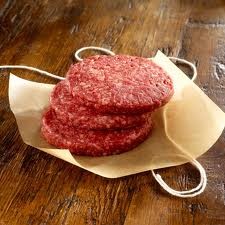 Imported manufacturing beef prices in the US were flat last week, as end-users appeared to have adequate supplies for the time-being, market analysts said.
Imported manufacturing beef prices in the US were flat last week, as end-users appeared to have adequate supplies for the time-being, market analysts said.
Prices for US imported lean trimming beef last week eased US0.5¢ to US209.5¢/lb, or 414¢/kg in A$.
Part of the reason for the flat demand appeared to be heavy Australian manufacturing beef shipments during December, which reached 13,814 tonnes, a 42pc increase year-on-year, and well above the five-year average, according to DAFF export statistics.
“Some have speculated that this rise in December shipments was in part due to US end-users aggressively purchasing beef in anticipation of higher prices in the first quarter started January 1,” Steiner Consulting said in its weekly US export report.
A second factor was fears that the US East Coast ports could be closed in early January due to a maritime strike.
“The jump in December supplies from Australia has clearly helped alleviate a shortage of spot grinding beef that we saw develop in December,” the Steiner report said.
Although current stocks were not particularly high, market participants reportedly opted to sit on the sideline last week, in anticipation of increased slaughter from Australia and NZ in the coming weeks.
Pricing seen last week followed a trend established in early December. The main exception to the current steady price trend was bull meat, which was lower compared to the previous week, Steiner Consulting said.
New Zealand packers are back to work after a Christmas break, and US market participants indicated they were seeing higher quantities of bull meat offered from NZ at somewhat lower values than previous offers.
Volume remains light, however, and bids for more business went unanswered.
Also, not all NZ packers appeared willing to take some of the lower bids. There was some speculation that some of the lower prices being quoted likely reflected short positions, a somewhat risky strategy at this time of year.
“US market participants expect more meat out of NZ and Australia, especially given expectations of higher slaughter levels in both markets,” Steiner said.
The report raised several points when examining the recent and current price of lean grinding beef versus year-ago levels.
Firstly, the seasonal increase in the price of US domestic lean grinding beef from October to January has been less pronounced than what the seasonal trend would indicate. In part this was because prices in October were already high, reflecting in part the buyers’ expectations for higher prices down the road. As a result, the price of domestic US 90CL beef increased from around $2.00/lb in early October to around $2.11/lb last week, a 5.5pc increase.
Across the same period a year earlier, the price of domestic 90CL beef rose from $1.66/lb to $2.06/lb, a 24pc increase. The average seasonal trend for this time of year would suggest a 14pc price increase. “But again, prices last October were already inflated by expectations,” Steiner said.
A second factor was the normal tendency for prices to continue to move higher into March and April, as the supply of US domestic beef trends lower.
Currently US cow supplies remain plentiful, with US cow and bull slaughter currently running at a weekly pace of about 151,000 head, only slightly lower than the peak of the fall cow run.
“With no shortage of domestic cow lean beef and with relatively flat prices for fed beef round cuts, the supply of lean beef in the US market appears to be adequate, keeping prices in check,” Steiner said.
Going forward, the expectation is for prices to climb as cow supplies dwindle, however. “It happened last year and we expect it to happen this year as well,” last week’s report said.
The only thing keeping US cow slaughter levels high at this point was a continued liquidation of the US dairy cow herd.
Dairy cow weekly slaughter in December was 245,000 head, 5pc higher than a year ago. Beef cow slaughter during that time was 274,700 head, down 9pc compared to last year.
Drought impact lingers
A second factor was that the drought in the US is far from over.
While there has been plenty of precipitation in the Eastern US, the Western Corn Belt has not seen anywhere close to the amount of moisture needed to alleviate the drought situation.
“There is still time as the region tends to get significant moisture during the spring. Still, the fact that this is shaping up as a very dry winter, with limited snowfall, does not bode well for US grain prices and also pasture conditions in this area,” Steiner said.
The expectation coming into this year was that there would be a notable reduction in US cow slaughter. But if drought persists and grain prices remain at elevated levels, some of the earlier assumptions about US herd rebuilding this year will likely need to be adjusted.
